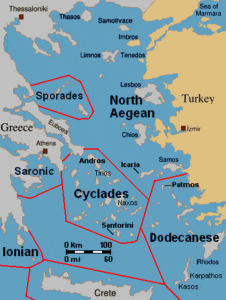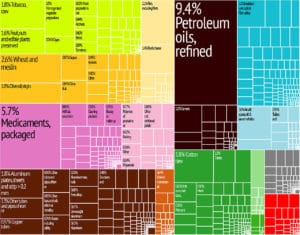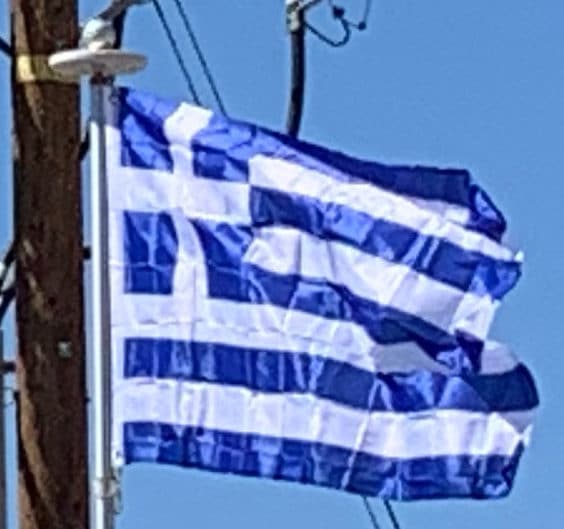Northeastern Greece features another high-altitude mountain range, the Rhodope range, spreading across the region of East Macedonia and Thrace; this area is covered with vast, thick, ancient forests, including the famous Dadia Forest in the Evros regional unit, in the far northeast of the country.
Extensive plains are primarily located in the regions of Thessaly, Central Macedonia and Thrace. They constitute key economic regions as they are among the few arable places in the country. Rare marine species such as the pinniped seals and the loggerhead sea turtle live in the seas surrounding mainland Greece, while its dense forests are home to the endangered brown bear, the Eurasian lynx, the roe deer and the wild goat.

Greece features a vast number of islands – between 1,200 and 6,000, depending on the definition, 227 of which are inhabited – and is considered a non-contiguous transcontinental country. Crete is the largest and most populous island; Euboea, separated from the mainland by the 60 m-wide Euripus Strait, is the second largest, followed by Lesbos and Rhodes.
The Greek islands are traditionally grouped into the following clusters: the Argo-Saronic Islands in the Saronic gulf near Athens, the Cyclades, a large but dense collection occupying the central part of the Aegean Sea, the North Aegean islands, a loose grouping off the west coast of Turkey, the Dodecanese, another loose collection in the southeast between Crete and Turkey, the Sporades, a small tight group off the coast of northeast Euboea, and the Ionian Islands, located to the west of the mainland in the Ionian Sea.
Economy:
According to World Bank statistics for the year 2013, the economy of Greece is the 43rd largest by nominal gross domestic product at $242 billion and 52nd largest by purchasing power parity (PPP) at $284 billion. Additionally, Greece is the 15th largest economy in the 27-member European Union. In terms of per capita income, Greece is ranked 38th or 40th in the world at $21,910 and $25,705 for nominal GDP and PPP respectively. The Greek economy is classified as advanced and high-income.

Greece is a developed country with a high standard of living. Its economy mainly comprises the service sector (85.0%) and industry (12.0%), while agriculture makes up 3.0% of the national economic output. Important Greek industries include tourism (with 14.9 million international tourists in 2009, it is ranked as the 7th most visited country in the European Union and 16th in the world by the United Nations World Tourism Organization) and merchant shipping (at 16.2% of the world’s total capacity, the Greek merchant marine is the largest in the world), while the country is also a considerable agricultural producer (including fisheries) within the union.
With an economy larger than all the other Balkan economies combined, Greece is the largest economy in the Balkans, and an important regional investor. Greece is the number-two foreign investor of capital in Albania, the number-three foreign investor in Bulgaria, at the top-three of foreign investors in Romania and Serbia and the most important trading partner and largest foreign investor of North Macedonia. Greek banks open a new branch somewhere in the Balkans on an almost weekly basis. The Greek telecommunications company OTE has become a strong investor in Yugoslavia and other Balkan countries.
